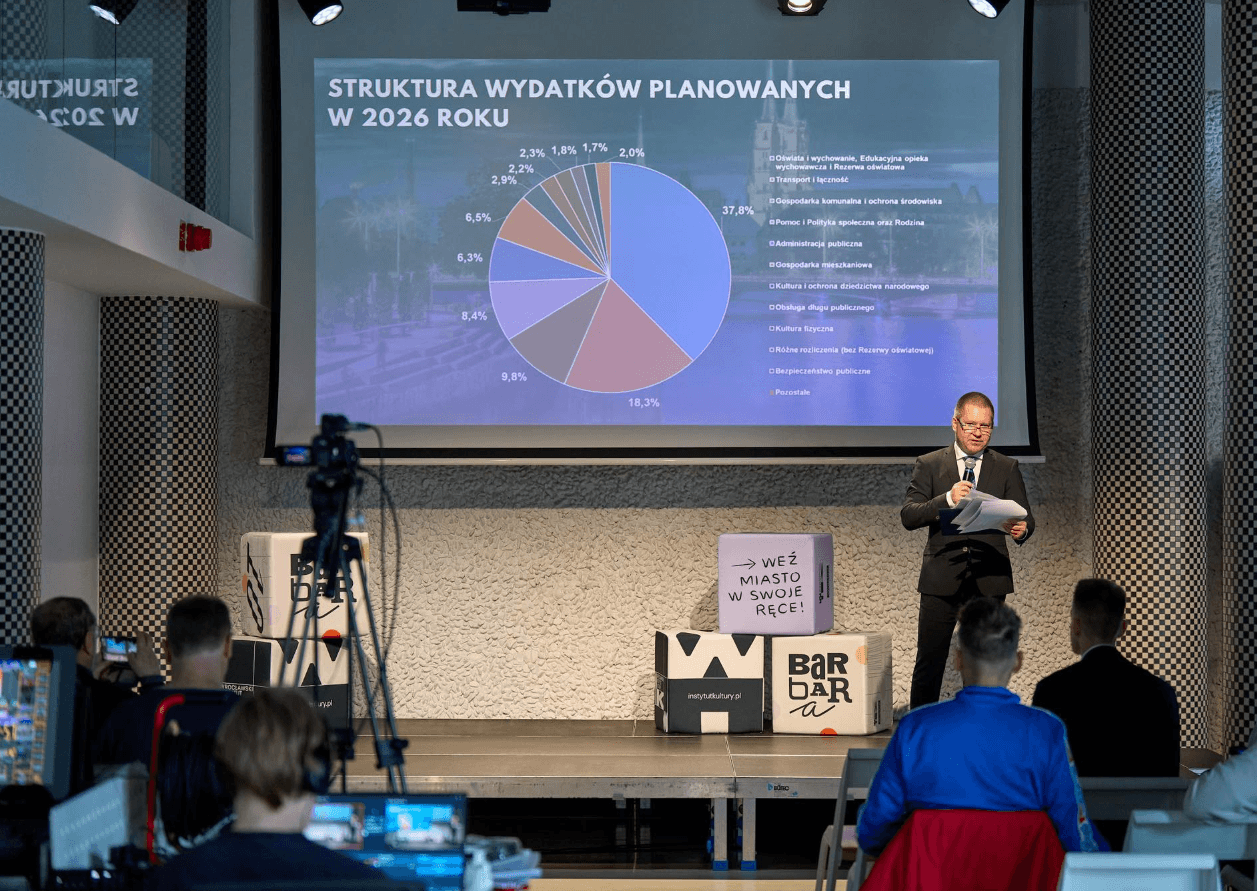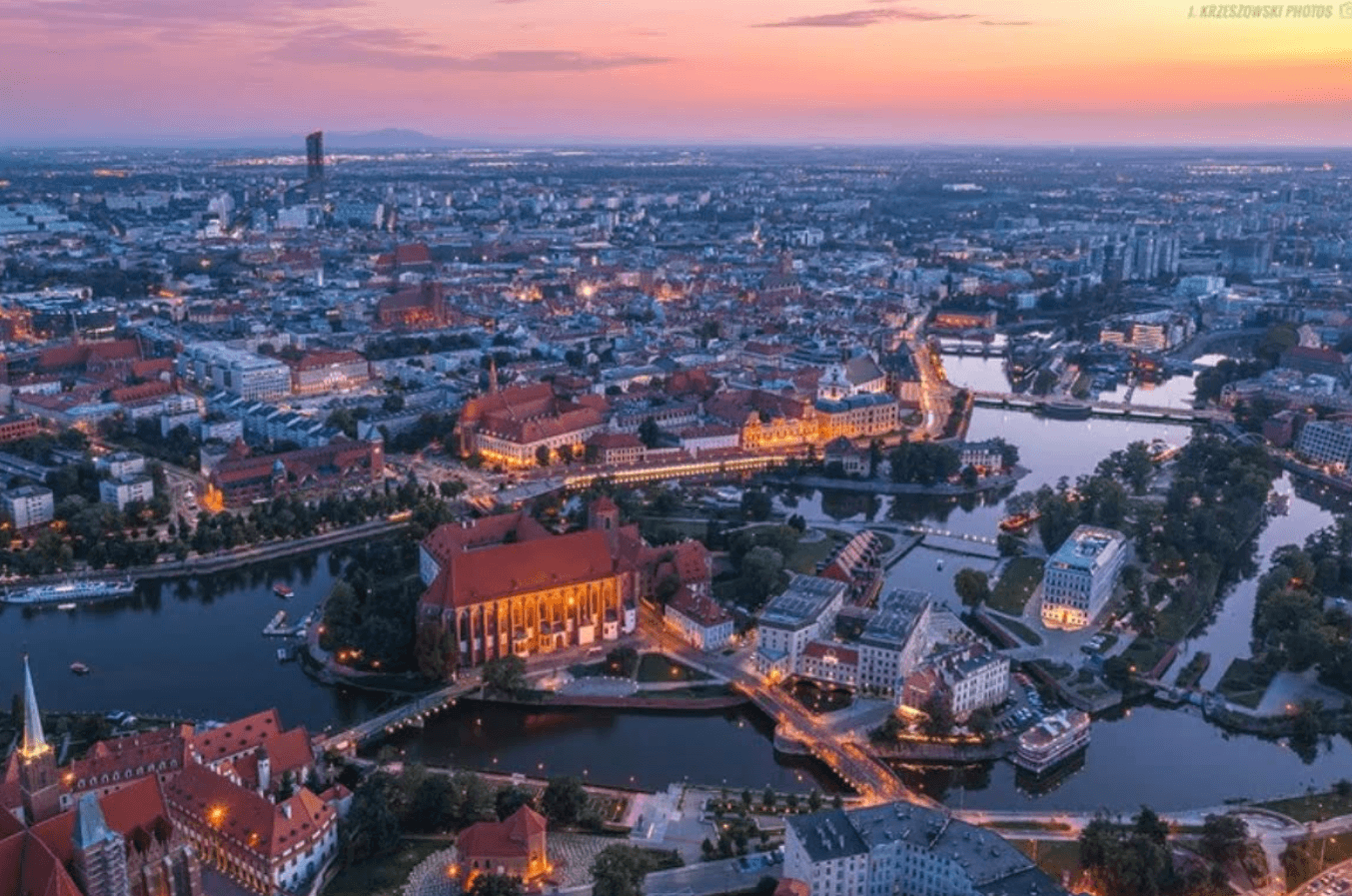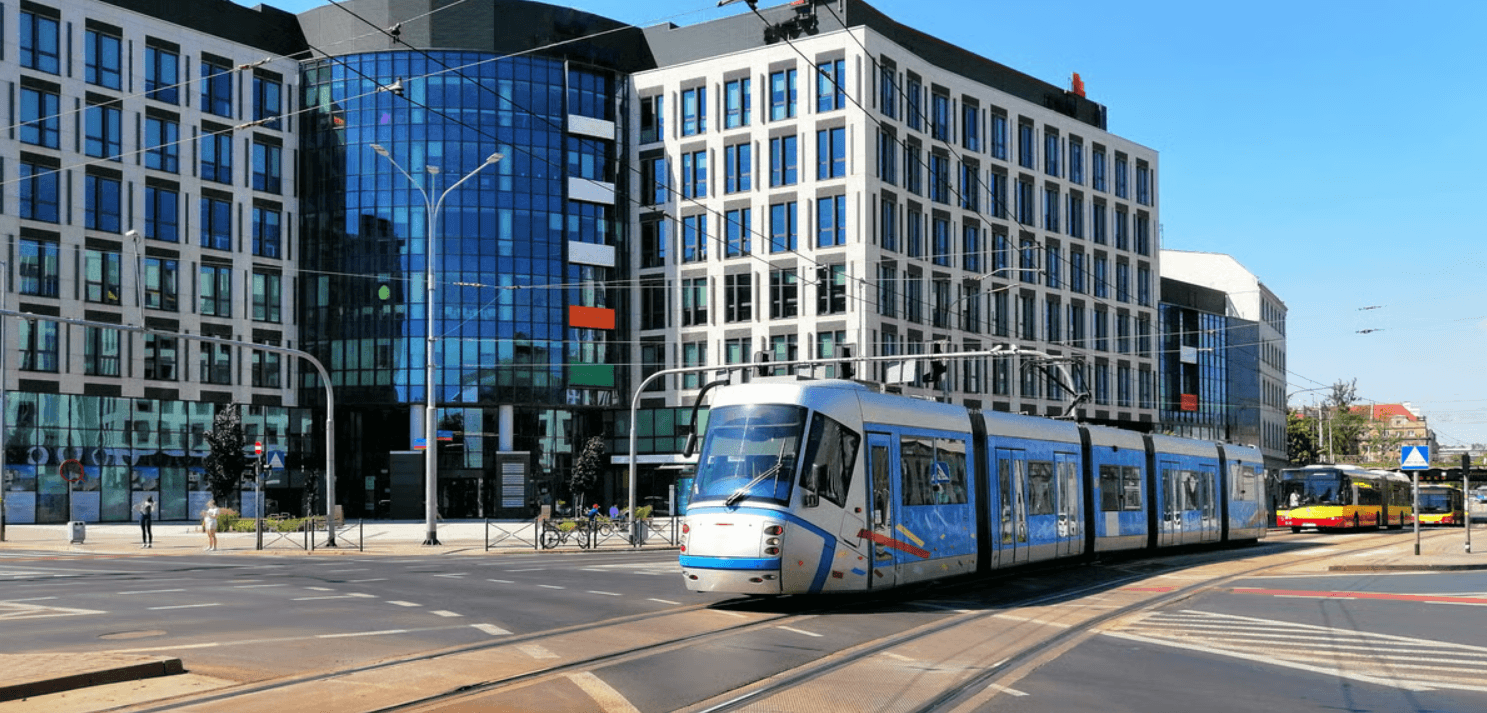Wroclaw's record budget for 2026

Wroclaw is planning a record budget for 2026 – over PLN 9.4 billion in expenditure and PLN 8.5 billion in revenue. The city maintains a stable financial situation and is increasing its investment expenditure. Its priorities include investments in road infrastructure, education, green spaces, and housing. See the details and learn about Wroclaw's draft budget for 2026.
– Although the costs of maintaining the city continue to rise, Wrocław is in good financial condition. Next year, we have planned a deficit of PLN 940 million. This is PLN 193 million more than this year. However, this is the result of record investments, not current expenditure. Despite inflation, Wrocław is one of the few cities that has not raised prices for key services for years. The only issue we regulate annually is the indexation of property tax prices, in accordance with the inflation calculations of the Minister of Finance. Other Polish cities do the same,” emphasizes Marcin Urban, treasurer of Wrocław.
Wrocław's record investment budget
In 2026, per capita income will reach a record PLN 12,587, which is nearly PLN 1,000 more than the previous year. Another positive development is the record investment budget, which will amount to as much as PLN 1.3 billion next year.

Wrocław's revenues and expenditures in the 2026 budget
The largest part of the revenues – PLN 4.9 billion – comes from PIT and CIT taxes. This is over PLN 400 million more than in 2025. The increase in revenue is the result of the city's dynamic development and the growing number of residents and businesses. This year, the city ran an information campaign called “Your PIT changes Wrocław.” It successfully encouraged residents to settle their taxes in Wrocław.
“This campaign is primarily about raising awareness among residents that by paying their taxes in Wrocław, they contribute to the real development of the city. The revenue from this source accounts for the lion's share of the budget,” adds Marcin Urban.
Next in the revenue table are local taxes (PLN 945 million) and revenue from fees (PLN 731 million).
Expenditures are also higher, at PLN 9.4 billion. They continue to be affected by inflation, interest rates that are lower than last year but still high, wage growth in the economy, and energy prices.
- Education spending continues to account for the largest share of Wrocław's expenditures, at 38%, or over PLN 3.5 billion.
- Next year, the city will allocate 18% of all expenditures, or PLN 1.72 billion, to transport and communications.
- Municipal services and environmental protection: next year, these expenditures will total PLN 917 million, or 10% of the budget.
- Wrocław plans to allocate PLN 793 million next year to aid, social policy, and family. This is 8% of the budget. Let us remind you that the city implements numerous social, health, and preventive programs.
- Next year, the city has set aside PLN 273 million for tasks related to culture and the protection of national heritage. This includes funds for the ongoing maintenance of cultural institutions.
- PLN 155 million will be allocated to public safety. This is over PLN 24 million more than last year.
Investments in education
As in previous years, the largest part of the city's expenditure is on education. This amounts to over PLN 3.5 billion. Such a large scale of financing shows how great Wrocław's needs are in this area and how much of a priority it is for the city.
Of this amount, PLN 1.96 billion is earmarked for salaries for teachers and administrative staff. This is a daily concern to ensure that Wrocław's schools and kindergartens operate efficiently, offer a high level of teaching, and are a friendly place for both students and staff.
At the same time, investments in modern educational infrastructure are planned. In 2026, PLN 204 million will be spent on this purpose.
“We are building the most modern schools in Poland – friendly to students, teachers, and the environment. New educational facilities in Wrocław are being built using renewable energy sources, energy-efficient technologies, and solutions that promote the health and well-being of students,” says Jarosław Delewski, Director of the Department of Education.
Key projects for next year include:
- completion of the construction of a modern school and kindergarten complex on Zwycięska Street – PLN 41.4 million (total cost PLN 90 million),
- the expansion of Primary School No. 6 at ul. Gorlicka – PLN 20.8 million (total value approx. PLN 25 million),
- the construction of an 8-classroom kindergarten at ul. Rogowska (P No. 148) – PLN 10.3 million in 2026 (total cost approx. PLN 15.5 million),
- construction of a new sports hall for Primary School No. 97 at ul. Prosta – PLN 8.25 million in 2026 (total cost approx. PLN 27 million).
Another PLN 25 million has been earmarked for ongoing renovations and modernizations in educational institutions. These funds will help maintain high standards of education, safety, and comfort in Wrocław's schools and kindergartens.
Investments in road infrastructure and transport
Wrocław has been investing in a modern and sustainable transport system for years. Next year, as part of the long-term financial forecast, approximately PLN 572 million will be allocated to investment projects in the field of transport and communications, which accounts for as much as 46 percent of all the city's investment expenditures.
“We will allocate PLN 163 million to improving the condition of road infrastructure, including almost PLN 30 million for the modernization of road surfaces as part of the ”Wrocław na Dobrej Drodze“ (Wrocław on the Right Track) program and PLN 22 million for the renovation of engineering structures,” explains Elżbieta Urbanek, Director of the Department of Infrastructure and Transport. Elżbieta Urbanek.
In 2026, key projects will continue, including:
- the reconstruction of the intersection of Wiejska, Jordanowska, Awicenny, Mokronoska, and Cesarzowicka streets,
- the construction of the road surface on Chrzanowskiego Street,
- the improvement of the road surface on Koszarowa Street.
“Next year, we also plan to begin the reconstruction of Gajowicka and Pawia Streets – investments that will significantly improve traffic safety and flow in these parts of the city. We are also continuing with the implementation of large projects. These include, above all, the construction of a new tram route from Sępolno to Swojczyce and the reconstruction of the intersection of Dubois and Drobnera streets. Expenditure on these investments in 2026 will amount to nearly PLN 112 million, adds Director Urbanek.
An important element of Wrocław's transport policy are also “Park and Ride” projects, which the city is implementing with the support of EU funds. In 2026, parking lots will be built in the vicinity of the Leśnica, Wrocław Pracze, Wrocław Zakrzów, and Wrocław Wojnów Wschodni railway stations.
Wrocław has not forgotten about pedestrians and cyclists either. Over PLN 43 million has been earmarked for the pedestrian and bicycle program, under which the city will implement, among other things, the construction of a pedestrian crossing in the area of Bastion Sakwowy and a pedestrian and bicycle route along Ołtaszyńska Street.
The modernization of tram tracks will also continue, which is extremely important for the safety and reliability of public transport.
In 2026, nearly PLN 59 million will allow for the renovation of tracks in, among others, Trzebnicka, Stawowa, and Peronowa Streets and at the intersection of Kazimierza Wielkiego, Krupnicza, and the Krzyki terminus.

Housing
Wrocław is undergoing the largest post-war renovation of tenement houses. In the previous term of the local government (2019-2024), it covered about 120 buildings wholly owned by the City. In 2025, the city began renovating another 30 tenement houses and will reach a similar number in 2026.
“The year 2026 will also be marked by work in Brochów, in the area of Chińska and 3 Maja Streets. The first works are already underway there, but the most intensive work is expected in the coming years, with completion planned for 2028-2029. We are also working on documentation for Leśnica, where we recently announced the renovation of 15 municipal buildings by 2031,” says Jan Bujak, Director of the Real Estate and Operations Department.
The largest new project in 2026 will be the renovation of the interior in Ołbin (Sienkiewicza – Reja – Nowowiejska – Piastowska – Krzywa). This is a total of almost 2 hectares. Next year, the city will begin the first stage of work there, costing approximately PLN 7.5 million. Many other renovations are also planned, including, for example, the start of the long-awaited renovation of the Zgodna – Pl. Zgody – Komuny Paryskiej courtyard in Przedmieście Oławskie and many others.
Staying on the subject of housing, since 2019, Wrocław has replaced over 15,000 “smokers” for PLN 330 million. What is particularly important is that within the next four months, the city will complete the process of replacing the lowest quality furnaces in all buildings that are 100% owned by the municipality. In 2026, almost PLN 42 million will be allocated for this purpose.
Investments in green Wrocław
For years, Wrocław has been consistently focusing on greenery and sustainable urban development. An example of such activities is the unsealing of the surface on Nowy Targ Square. In recent years, Wrocław has also gained a new park – Krzycki – a green recreational space for residents of southern housing estates, combining leisure functions with nature conservation. Further projects, such as the redevelopment of the square in front of the History Center Zajezdnia, are already underway. In total, Wrocław has allocated PLN 82 million for investments in greenery next year alone.
“One of the most important projects for next year will be the PLN 20 million project on the Irrigation Fields, for which we have reserved PLN 12 million in 2026. Its aim is to maintain wetlands and create an attractive educational and recreational area that will combine natural and social functions. This is an investment in the future – in natural water retention, biodiversity protection, and environmental education for residents,” explains Katarzyna Szymczak-Pomianowska, Director of the Department of Strategy and Sustainable Development.
Another important task will be the revitalization of the second sector of Szczytnicki Park – one of the most beautiful and recognizable green areas in Wrocław. The city will allocate PLN 8 million for this purpose in 2026, and the total value of the investment is PLN 15 million.
“We are not forgetting about new recreational areas in residential areas. We will allocate PLN 5.1 million to the construction of a new park on Idzikowskiego Street, the total cost of which is PLN 12.5 million. This place is to become a space for the integration of residents and another green haven,” adds Szymczak-Pomianowska.
In turn, Wrocław will spend PLN 4.7 million on the development of the Old Town Promenade – the section from Piotra Skargi Street to Oławska Street. The total value of this investment is PLN 11.3 million. This is an important project in the heart of the city.
In 2026, the city also plans to begin work on greening and renovating the Market Square and Świdnicka Street. The value of the investment is PLN 3 million.
The aim of the project is to improve the conditions in which urban trees grow – special systems will be used to protect the roots and allow them to grow freely. Their number will also change from 23 to 75.
All these activities are part of a broader strategy to build a sustainable and climate-friendly Wrocław, where greenery is not only decorative but also serves real ecological functions.
Expenditures on social issues
In the coming year, Wrocław will continue and develop key social projects. The largest investment project is the Care and Residential Center at 14A Morawska Street, on which the city will spend PLN 14.3 million. It is a modern facility dedicated to adults on the autism spectrum – one of the first of its kind in Poland. The center will offer both daytime and round-the-clock support. Approximately 20 people will benefit from the care, 5 of whom will be able to live in the accommodation section.
Another important area is assistance to people in crisis homelessness. We are allocating PLN 13.3 million to maintain thirteen facilities and housing projects.
“In addition, at 5 Bogedaina Street, we are building a shelter with 62 places for homeless people who, due to their age, illness, or disability, require partial assistance in their daily functioning. The facility will start operating in January 2026,” notes Magdalena Wdowiak-Urbańczyk, Director of the Department of Social Affairs.
Another important element is respite care, on which the city will spend PLN 3.8 million. This is an extremely necessary form of support for carers of people with disabilities – it allows them to rest, regenerate, and take care of personal matters, while providing professional care for their charges.
The city also does not forget about supporting families and people in need. PLN 6.5 million has been allocated for food aid. Thanks to these funds, the Municipality of Wrocław provides food parcels, hot meals in canteens, as well as meals delivered to the homes of seniors and people with mobility difficulties.
The budget is not just a set of tables and figures—it is a presentation of the vision for Wrocław and its development. And PLN 1.3 billion for investments is really a lot. We have a period of intense work ahead of us. On November 20, at the City Council session, we have planned the so-called first reading of the budget. Then we will work on it in committees. In December, we will meet to, I believe, adopt the budget.
Agnieszka Rybczak, Chairwoman of the Wrocław City Council

